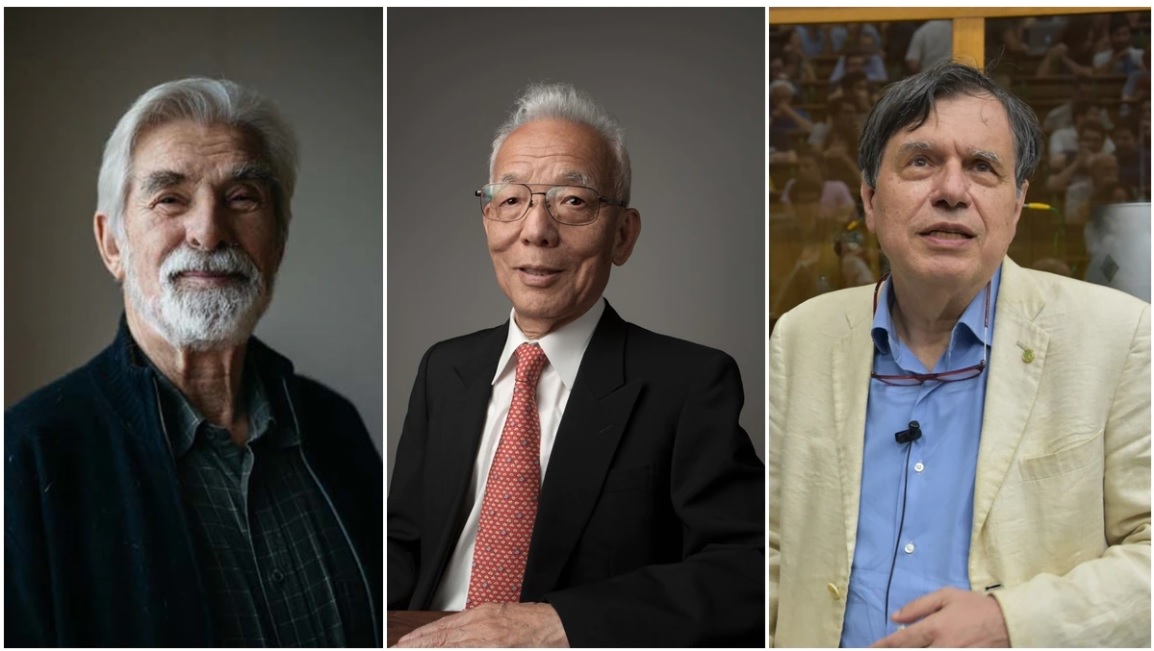As usual, this year’s wait and curiosity about Nobel prizes for the Physics community all over the world, in general and in Physics in particular ended this month with the announcement of all the recipients of noble prizes in six categories i.e., Physics, Chemistry, medicine, literature, economics and peace with their outstanding research discoveries/hypothesis. Starting from 1901-2021 so far 115 physics prizes have been bestowed to 219 laureates.
As a Physics enthusiast, I feel this year’s field (s) of recognition for Nobel prizes in Physics seem to be not that fascinating or catchy though may be path breaking problems “simple but hard to understand”. Moreover, the research findings proposed much earlier are being recognized by the Royal Swedish Academy of Sciences for this year’s Physics Nobel Prize which is evident from the age of this year’s Nobel laureates, as all the three are of the age bracket of 70-90 years (Syukuro Manabe-90 years; Klaus Ferdinand Hasselmann-89 years and Giorgio Parisi-73 years).
According to The Royal Swedish Academy of Sciences the 2021 Nobel Prize in Physics has been awarded to Syukuro Manabe (Japanese-borm American, Princeton University, USA), Klaus Hasselmann (Max Planck Institute for Meteorology, Hamburg, Germany), and Giorgio Parisi (Sapienza University of Rome, Italy) "for ground breaking contributions to our understanding of complex physical systems". The three Laureates share this year's Nobel Prize in Physics for their studies of chaotic and apparently random phenomena. Syukuro Manabe and Klaus Hasselmann laid the foundation of our knowledge of the Earth's climate and how humanity influences it whereas Giorgio Parisi is rewarded for his revolutionary contributions to the theory of disordered materials and random processes. Trio win physics Nobel for work deciphering chaotic climate. The decision of Nobel committee to recognise the research fields and their importance is hailed by the U.N. weather agency as a sign of a consensus forming around man-made global warming. The Nobel prize as one half of the 10-million Swedish crown ($1.15 million) prize goes in equal parts to Manabe and Hasselmann for modelling earth’s climate and reliably predicting global warming and the other half goes to Parisi for discovering in the early 1980s "hidden rules" behind seemingly random movements and swirls in gases or liquids that can also be applied to aspects of neuroscience, machine learning and starling flight formations.
Scientists have spent decades urging climate change action on an often reluctant society and it is just that people are not willing to accept the fact that they have to react now for something that will happen in a few years. Syukuro Manabe and Klaus Hasselmann laid the foundation of our knowledge of the Earth’s climate and how humanity influences it, the Royal Swedish Academy of Sciences said in a statement. Giorgio Parisi is rewarded for his revolutionary contributions to the theory of disordered materials and random processes. Manabe, who works at Princeton University in the United States, had laid the foundation in the 1960s for today's understanding of Earth's climate after moving to the United States from Japan to continue his research. According to Manabe, “already, as you know, there are many phenomena showing climate change is happening, and I think that is the reason why the theme of climate change was selected for the award this time." Hasselmann, the Academy said, had developed models about 10 years later that became instrumental in proving that mankind's carbon dioxide emissions cause rising temperatures in the atmosphere. According to Parisi, "I think it is very urgent that we take real and very strong decisions and we move at a very strong pace”.
This year’s Nobel prize Physics has been awarded for climate and other complex phenomena. One complex system of vital importance to humankind is Earth’s climate. Syukuro Manabe demonstrated how increased levels of carbon dioxide in the atmosphere lead to increased temperatures at the surface of the Earth. In the 1960s, he led the development of physical models of the Earth’s climate and was the first person to explore the interaction between radiation balance and the vertical transport of air masses. His work laid the foundation for the development of current climate models. About ten years later, Klaus Hasselmann created a model that links together weather and climate, thus answering the question of why climate models can be reliable despite weather being changeable and chaotic. He also developed methods for identifying specific signals, fingerprints, that both natural phenomena and human activities imprint in the climate. His methods have been used to prove that the increased temperature in the atmosphere is due to human emissions of carbon dioxide.
Around 1980, Giorgio Parisi discovered hidden patterns in disordered complex materials. is discoveries being among the most important contributions to the theory of complex systems. They make it possible to understand and describe many different and apparently entirely random materials and phenomena, not only in physics but also in other, very different areas, such as mathematics, biology, neuroscience and machine learning.
According to the Nobel Committee for Physics, the discoveries being recognised this year demonstrate that our knowledge about the climate rests on a solid scientific foundation, based on a rigorous analysis of observations. This year’s Laureates have all contributed to us gaining deeper insight into the properties and evolution of complex physical systems.
